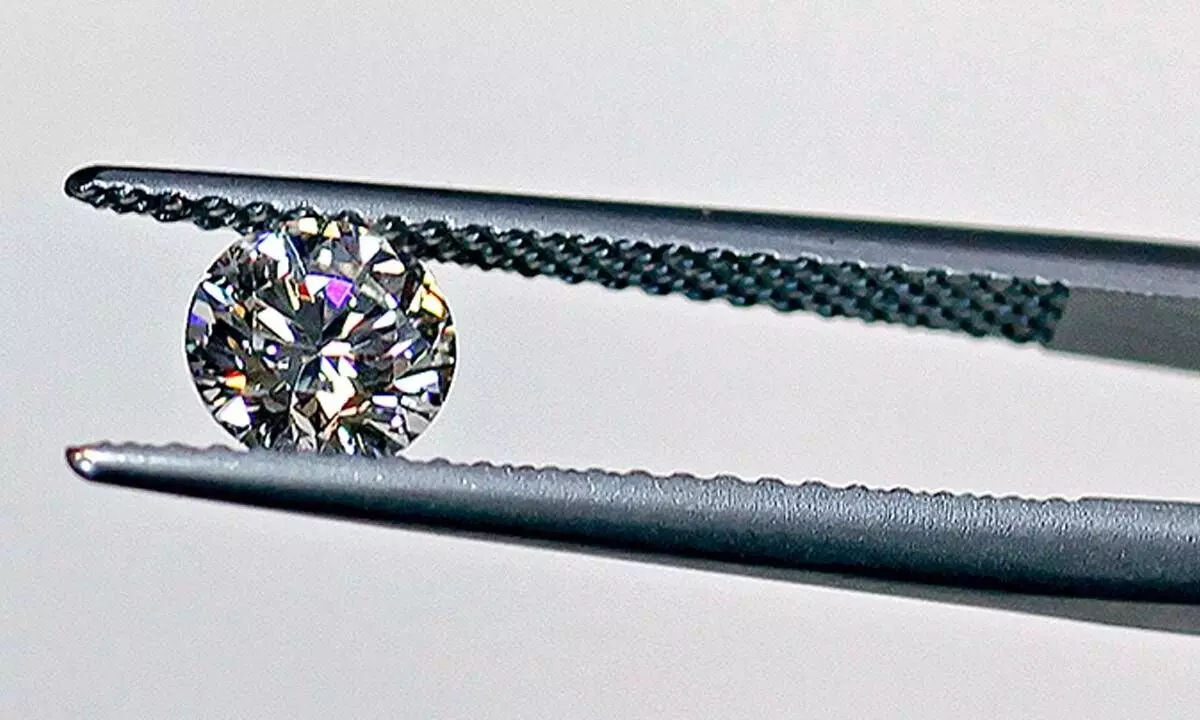Scientists develop lab-grown diamonds in just 15 minutes!
Scientists have developed a revolutionary technique to synthesize diamonds at normal atmospheric pressure without a starter gem, potentially making lab-grown diamonds easier and faster to produce.
image for illustrative purpose

Scientists have developed a revolutionary technique to synthesize diamonds at normal atmospheric pressure without a starter gem, potentially making lab-grown diamonds easier and faster to produce.
A New Frontier in Diamond Synthesis
Using an innovative method, researchers have managed to create diamonds at ambient temperatures and pressures in just 15 minutes. This advancement could simplify the production of lab-grown diamonds significantly.
Natural diamonds form deep within Earth's mantle under extreme pressures of several gigapascals and temperatures exceeding 2,700 degrees Fahrenheit (1,500 degrees Celsius). Traditional lab-grown diamonds mimic these conditions using the high-pressure high-temperature (HPHT) method, which requires intense settings to convert carbon dissolved in liquid metals into diamond around a small seed. This process typically takes one to two weeks and produces diamonds about the size of a blueberry.
Another method, chemical vapor deposition (CVD), reduces some of these extreme conditions but still requires a starter seed.
The Breakthrough Technique
The new technique, developed by Rodney Ruoff and his team at the Institute for Basic Science in South Korea, addresses the limitations of both HPHT and CVD methods. Their findings were published on April 24 in the journal Nature.
Ruoff had been contemplating new diamond-growing methods for over a decade. The team used electrically heated gallium mixed with a bit of silicon in a graphite crucible. Gallium was chosen because it had been previously shown to catalyze graphene formation, a pure carbon structure like diamond but arranged in a single layer.
The crucible was placed in a custom-built chamber at sea-level atmospheric pressure, where superhot, carbon-rich methane gas was flushed through. Designed by co-author Won Kyung Seong, this 2.4-gallon (9 liters) chamber allowed rapid experimentation with different metal and gas concentrations. The optimal mix of gallium, nickel, iron, and a pinch of silicon produced diamonds at the crucible's base in just 15 minutes. A more complete diamond film formed within two and a half hours, with spectroscopic analysis showing high purity, despite a few silicon atoms.
Challenges and Future Prospects
Although the exact mechanism remains unclear, the researchers believe a temperature drop drives carbon from the methane to the crucible's center, where it crystallizes into diamond. Silicon appears to act as a crucial seed in this process.
Despite the success, the diamonds produced are extremely small—hundreds of thousands of times smaller than those made with HPHT—making them unsuitable for jewelry. However, their potential for technological applications, such as in polishing and drilling, remains to be explored. Ruoff is optimistic that this low-pressure process could scale up diamond synthesis significantly in the near future.
"In about a year or two, the world might have a clearer picture of things like possible commercial impact," Ruoff said.

